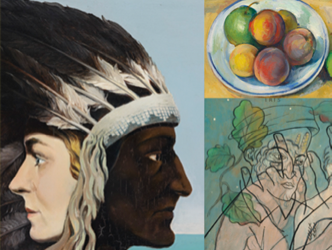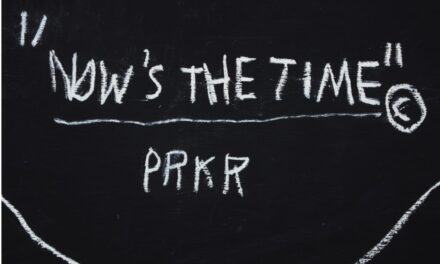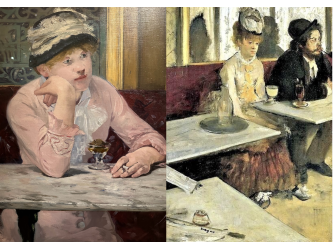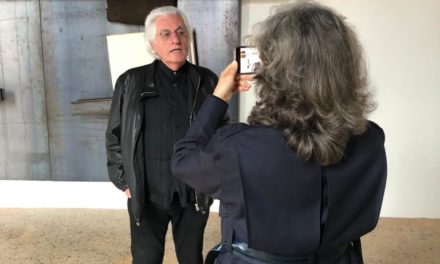Impressionnist and modern
On 26 and 27 February in London, Sotheby’s and Christie’s will be presenting during the evening sales 126 impressionist and modern artworks with a total estimate of 290 million euros. These are the first significant sales of 2019 in this area.
Within a context of greater foreign exchange controls in China – a country that’s a major consumer of works by Picasso and Monet – plus Brexit, and along with political instability in various other nations, there’s a prevailing mood of unease which may not seem very conducive to art world transactions.
Small number of bidders
Moreover, according to Thomas Seydoux, former director of the modern art department at Christie’s and now a private dealer: “in 2018 the art market was pushed to its limit, particularly as a result of the system of guarantees by third parties at auction, which brings about excesses in the valuing of artworks. In this instance we have observed very high prices, sustained by a small number of bidders.”
Surrealism sales
This season in London, the sales are organized in two parts, with one section reserved exclusively for the surrealist movement.
In addition, Christie’s is presenting an American collection, most likely assembled during the 1980s in Boston, containing several major works.
Paul Cézanne
The star piece within this ensemble, which has been called “Hidden Treasures” in reference to the anonymous nature of the sale, is a rare still life by Paul Cézanne with an estimate of 20.5 million euros.
Out of the five highest prices ever attained at auction for the Aix-born artist, four were for still lifes. The record price, achieved in 1999, 57.2 million euros was reached for a very rich painting of this type.
The painting due to be presented on 27 February at Christie’s, “Still Life with Peaches and Pears” (« Nature morte de pêches et poires »), acquired in 1985, is simpler in style. In any case it isn’t animated by the imbalances in the construction of the painting which create a visual disturbance and characterise Cézanne’s masterpieces.
A little too conventional, then, according to various specialists…
The same evening will see the presentation of a simple apple by Picasso, a watercolour dating from the beginning of his cubist period in 1909, which directly references the still lifes of Cézanne.
This forbidden fruit has an estimate of 400,000 euros. Picasso described Cézanne as “the father of us all”.
René Magritte
February is definitely the month of René Magritte (1898-1967) in London.
Christie’s is presenting no less than seven works by the Belgian surrealist painter with a further two to be presented by Sotheby’s. According to Charly Herscovici, president of the Magritte Foundation, this is linked to the fact that in November 2018 a painting from 1937, “The Pleasure Principle” («Le principe du plaisir»), an enigmatic portrait of one of his patrons, was sold at auction for a record price: 23.8 million euros.
At Christie’s, Jason Carey observes that “the Belgian painter is receiving particularly consistent demand, including in Asia”.
The most commercial lot of the season is at Christie’s, a painting entitled « Le lieu commun» from 1964, which features some of the archetypes of his oeuvre: a man standing wearing a bowler hat is depicted against split backdrops, with trees in the middle. Originating from an Asian collection, this painting is estimated at 11.4 million euros.
Christie’s has dedicated a video to this lot.
There are in fact two phases of production, and consequently two markets for Magritte.
It was over the course of the first phase of production, starting in the mid-1930s, that he was able to develop his characteristic pictorial vocabulary freely.
During the second phase, from 1948 onwards, he was more governed by the dictates of his dealer Alexandre Iolas, who was based in New York among other places, and this phase comprises numerous repetitions.
One fascinating work from the first period is “The Morning Star” («L’étoile du matin») from 1938 depicting a Native American chief in profile, his feather headdress featuring a portrait of René’s wife, Georgette. This painting, presented by Sotheby’s with an estimate of 3.9 million euros, hadn’t left the same Belgian family since 1939.
Francis Picabia
Since the retrospective (among others) dedicated to him in 2016 at the Kunsthaus in Zurich then at Moma in New York, Francis Picabia (1879-1953) has been seen as one of the modern artists who have made the greatest impact on contemporary artistic production.
Transparences
Christie’s and Sotheby’s are each presenting one work from his “Transparencies” («Transparences ») series, which began in the late 1920s and which juxtaposes different subjects in order to create one single composition.
The most accomplished of these, as well as being the largest and the most well-conserved – the colours haven’t become yellowed – is named after the Greek goddess “Iris”.
This large-scale gouache on wood panel is to be presented on 27 February at Christie’s and is estimated at 580,000 euros. It was put up for sale, without success, in February 2017 with an estimate of 909,000 euros.
One day earlier Sotheby’s will be presenting an oil on wood panel, “Atrata” (apparently the Latin name for a type of insect), which featured in the Moma exhibition and is estimated at 1.6 million euros. According to Helena Newman, head of modern art at Sotheby’s, this rather inexplicable jump is justified by “a range of circumstances that aren’t always to do with the work itself”.
On 19 March Sotheby’s will be presenting another Picabia in Paris which belongs to the French dealers Pierre and Marianne Nahon. « Mélibée » from 1931 has an estimate of 2.5 million euros. It’s another of the transparencies which featured in the Moma exhibition.
Marcel Duchamp
Lastly we should point out that, for the first time, a sale on this level is presenting a book.
It must be noted that the cover features a relief work signed by Marcel Duchamp depicting a breast, accompanied by the mischievous title « Prière de toucher » (“Please Touch”).
Duchamp inscribed it with a dedication to a surrealist artist, Georges Hugnet, using a play on words « Sein-t- Hugnet » (as specified in the exhibition catalogue: “the French word ‘sein’ (breast) is a homonym for ‘ceint’ (crowned) as well as for ‘saint’ (saint, holy)”).
“This is a unique piece because this important book on postwar surrealism is signed,” explains the specialist on the subject at Sotheby’s, Cyrille Cohen. Estimate: 111,000 euros.
It was bought in 2016 in Paris at auction for 147,000 euros.
The seller clearly hopes to make a profit within the value-enhancing context of this London surrealist sale.
26 February, www.sothebys.com
27 February, www.christies.com
Support independent news on art.
Your contribution : Make a monthly commitment to support JB Reports or a one off contribution as and when you feel like it. Choose the option that suits you best.
Need to cancel a recurring donation? Please go here.
The donation is considered to be a subscription for a fee set by the donor and for a duration also set by the donor.













